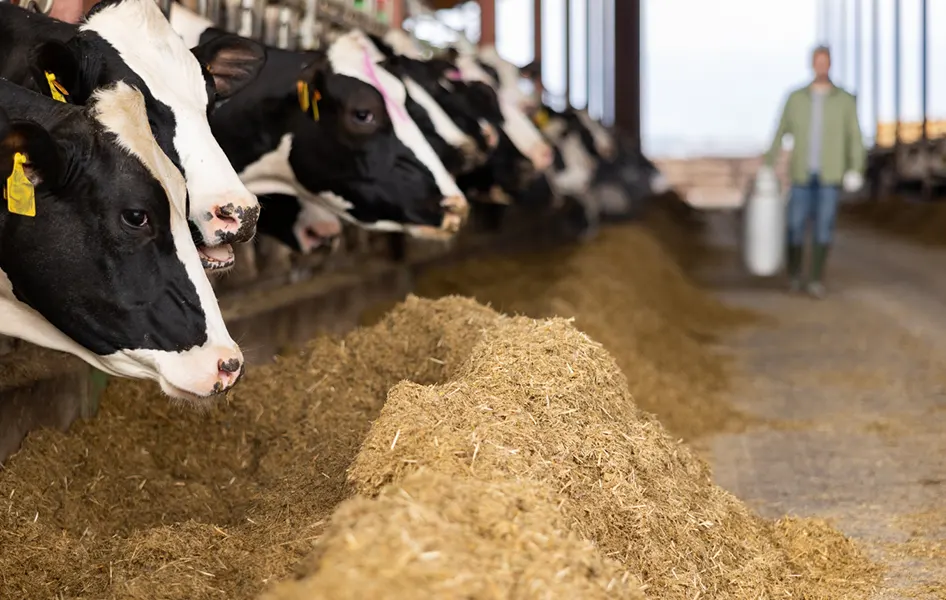Low-Fat Wet Distillers Grains (WDG) for Dairy & Beef Cattle
Call us on 608.960.6768 (Midwest) or 315.807.4233 (Northeast)
Low-fat wet distillers grains (Low-Fat WDG) are a nutrient-rich, cost-effective, and sustainable feed option for modern dairy operations. As a co-product of ethanol and alcohol production, Low-Fat WDG provide highly digestible protein, fermentable fiber, and essential minerals, helping support herd health, milk production, and farm profitability. Treated with propionic acid, Low-Fat WDG also offer extended shelf life, making them practical and reliable for year-round feeding.

Key Benefits of Low-Fat Wet Distillers Grains (Low-Fat WDG)
How Much Can Your Farm Save with Wet Distillers Grains?
Feed cost savings depend on the specific Low-Fat WDG product that best fits your farm’s nutritional needs and its proximity to our supply points. We offer two types of Low-Fat Wet Distillers Grains in Wisconsin:
Hi-Pro Low-Fat WDG: 41.5% protein Standard Low-Fat WDG: 32.5% protein
An independent nutrition consultant evaluated two typical dairy cow diets—one with 70lbs of corn silage and the other with 50lbs of corn silage. In both cases, traditional protein sources (e.g. canola meal, soybean meal) and fat sources (e.g. NutraCor) were partially replaced with Low-Fat WDG, while maintaining nutritional and mineral content.
Potential Feed Cost Savings:
| Diet Type | Daily Savings per cow | Annual Savings per 1,000 Cows |
|---|---|---|
| 70lb Corn Silage Diet | $0.29 – $0.33 | $105,000-$121,000 |
| 50lb Corn Silage Diet | $0.33 – $0.47 | $127,000-$171,000 |
Typical Analysis:
| Standard Low-Fat WDG | Hi-Pro Low-Fat WDG | |
|---|---|---|
| Dry Matter | 31.0% | 30.0% |
| Crude Protein | 32.6% | 41.5% |
| Crude Fat | 6.4% | 5.0% |
| ADF | 17.2% | 17% |
| NDF | 26.3% | 32.7% |
Other benefits:
• Both products are treated with propionic acid to extend shelf life for up to 10 days.
• Multiple suppliers to avoid supply interruptions.
• Highly palatable, promotes feed intake, drives yield, prevents feed sorting and reduces dust in the barn.